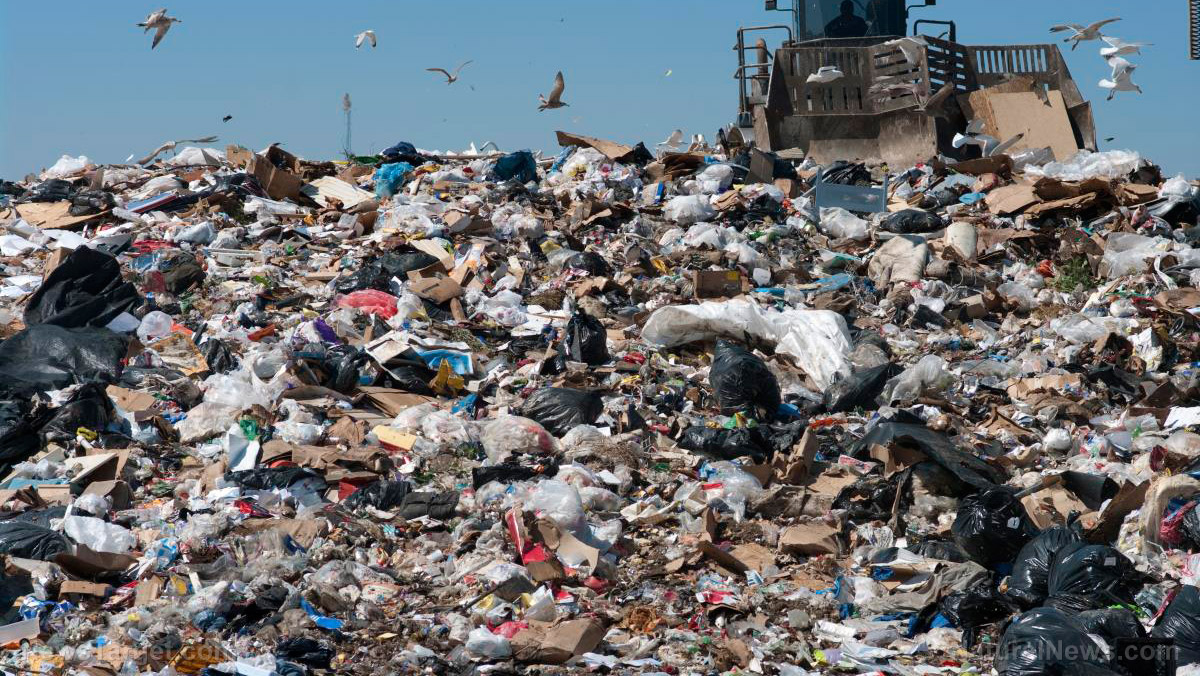Scientists say that waste from landfills could be recycled as energy or reused as raw materials
09/06/2018 / By Edsel Cook

We’ve long considered landfills and open dumps as necessary eyesores. However, a Swedish researcher suggests that we could reconsider their contents as sources of potential energy and raw materials, according to an article on ScienceDaily.
According to Yahya Jani, doctor of environmental science and chemical engineering, if people and industries think of waste as a source of potential profits, they would be encouraged to decontaminate waste disposal sites to get at those resources. A doctor of environmental science and chemical engineering at Linnaeus University (LU), Jani encourages the unprecedented procedure of mining landfills and dumps.
Humans have been throwing their trash in open dumps since the dawn of time. Landfills are a more recent practice that improves upon this by covering up the garbage with a layer of soil.
These two types of waste disposal sites are known to damage the environment over a long period of time. Landfills and open dumps are known to emit air pollutants like methane, as well as leach toxic contaminants into soil or nearby bodies of water.
Jani has a different opinion of these sites. He believes them to be treasure troves filled with untapped resources that could be used as energy sources or raw materials prized by various industries. (Related: From makeup wipes to wet wipes: How these non-woven fabrics do more harm than good.)
Landfill mining could turn dump sites into treasure troves
His dissertation envisions a circular economy where nothing is left to waste. Part of this model is the unorthodox process of landfill mining.
Jani believes in the adage that one man’s trash is another man’s treasure. Whereas most people see landfill waste as a problem, he sees a potential resource.
“More than 50% of the deposited waste dumped at landfills and open dump sites can be recycled as energy or reused as raw materials. These materials can be used as secondary resources in different industries instead of being forgotten or viewed as garbage,” he explains.
To support his proposal, Jani cites his method of extracting metals from the waste produced by Småland’s art and crystal glass industries. He says he can recover 99 percent of the metals from the waste dumped by the glassworks at Pukeberg. His earlier paper on the process is the world’s first published article on recycling metals from art and crystal glass.
Jani employed a similar extraction method for his new research study at Glasriket. He used chemicals to lower the melting point of glass waste, which allowed him to separate the metals from the mixture of glass and fine soil particles.
He reports that his metal extraction methods can be used on the glass found in old television sets and computer monitors, among other examples. Further refinement of his technique could see its future use at industrial facilities that recycle large amounts of glass and metal.
Jani believes that the influx of inexpensive raw materials could induce a renaissance in Småland’s moribund glass industry. Furthermore, by extracting raw materials from old landfills, the industry would contribute to the decontamination efforts of those sites, which lowers the risks they pose to human health and the environment.
Landfills and dump sites could be “bank accounts” in the future
A 2017 report by the European Commision warned that EU inhabitants dump 1.8 billion tons of waste in landfills every year. That massive amount of garbage is just 60 percent of their total output of trash.
Much of that waste could possess value as recycled raw materials using extraction techniques similar to those employed by Jani. Landfill mining would not just decontaminate the waste disposal site; it would also reduce the demand for raw materials extracted from the ground by traditional mining methods.
Visit Enviro.news for more stories on waste disposal methods and how they affect the environment.
Sources include:
Tagged Under: dump sites, energy sources, garbage, landfill, landfill mining, landfill waste, mining, mining dumps, open dumps, raw materials, Recycle, recycled waste, recycling metals, trash, Waste disposal




















